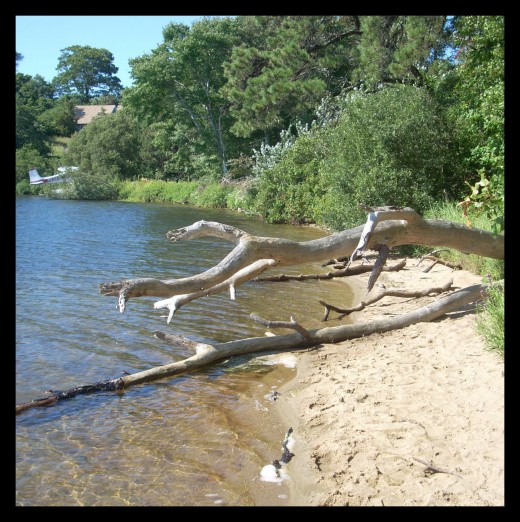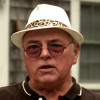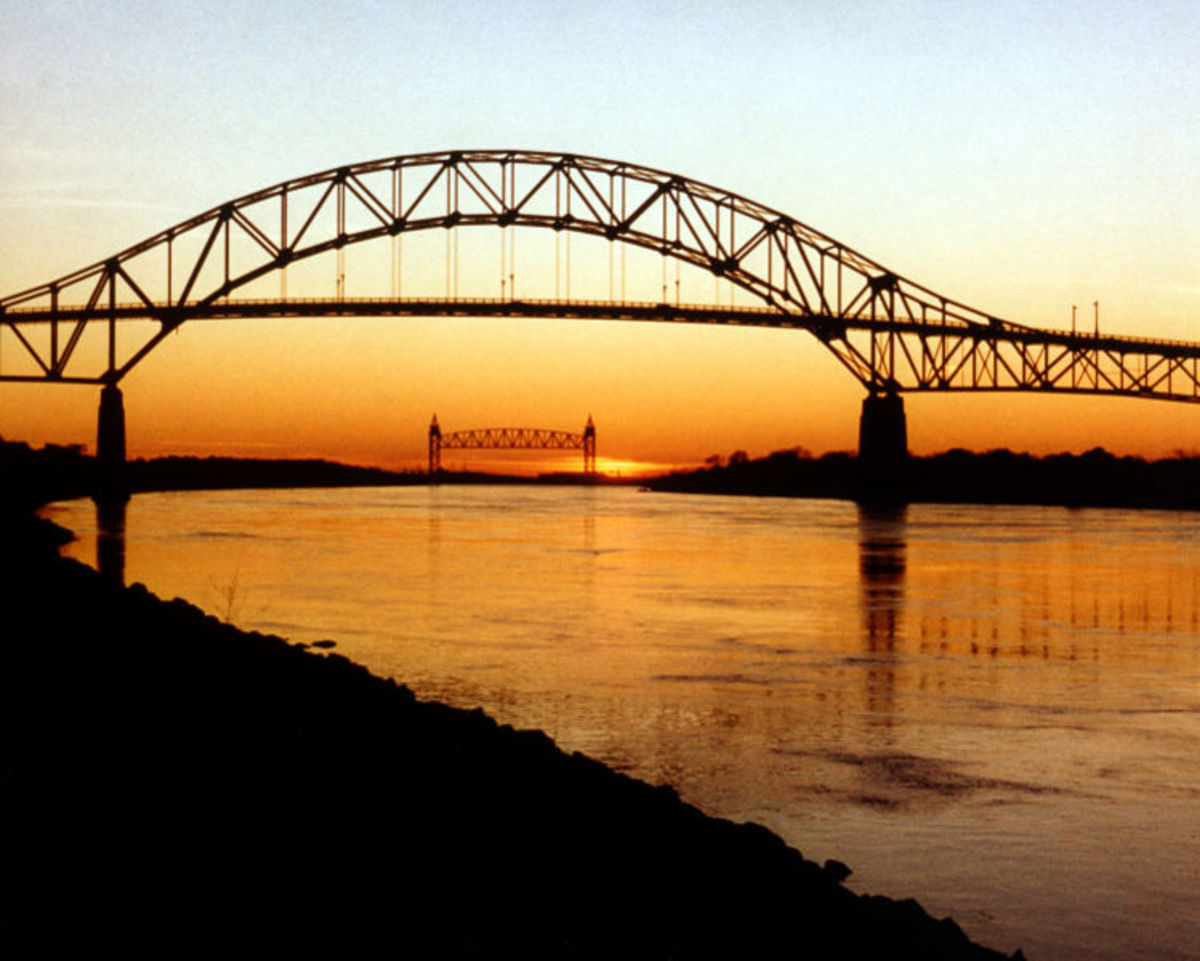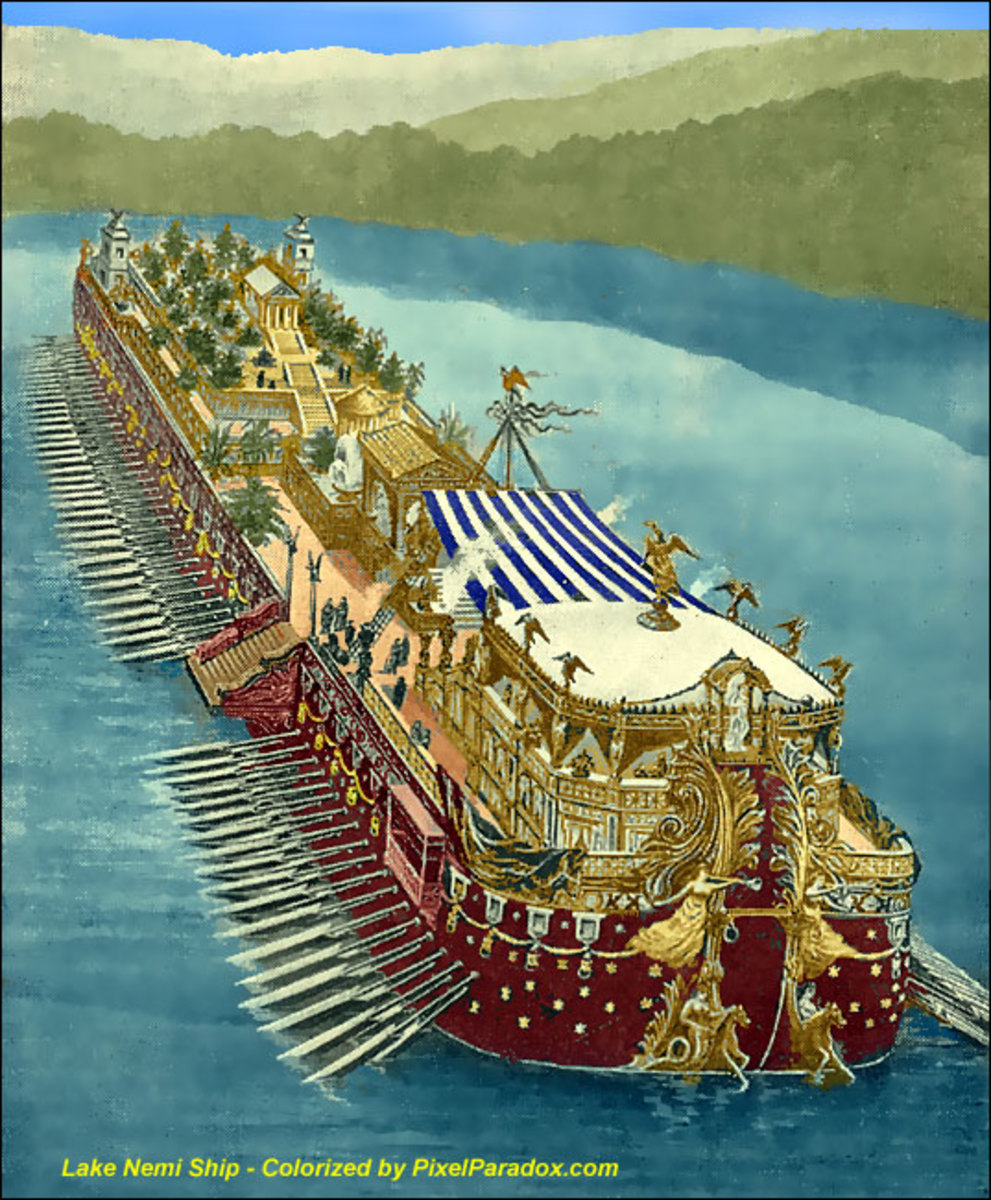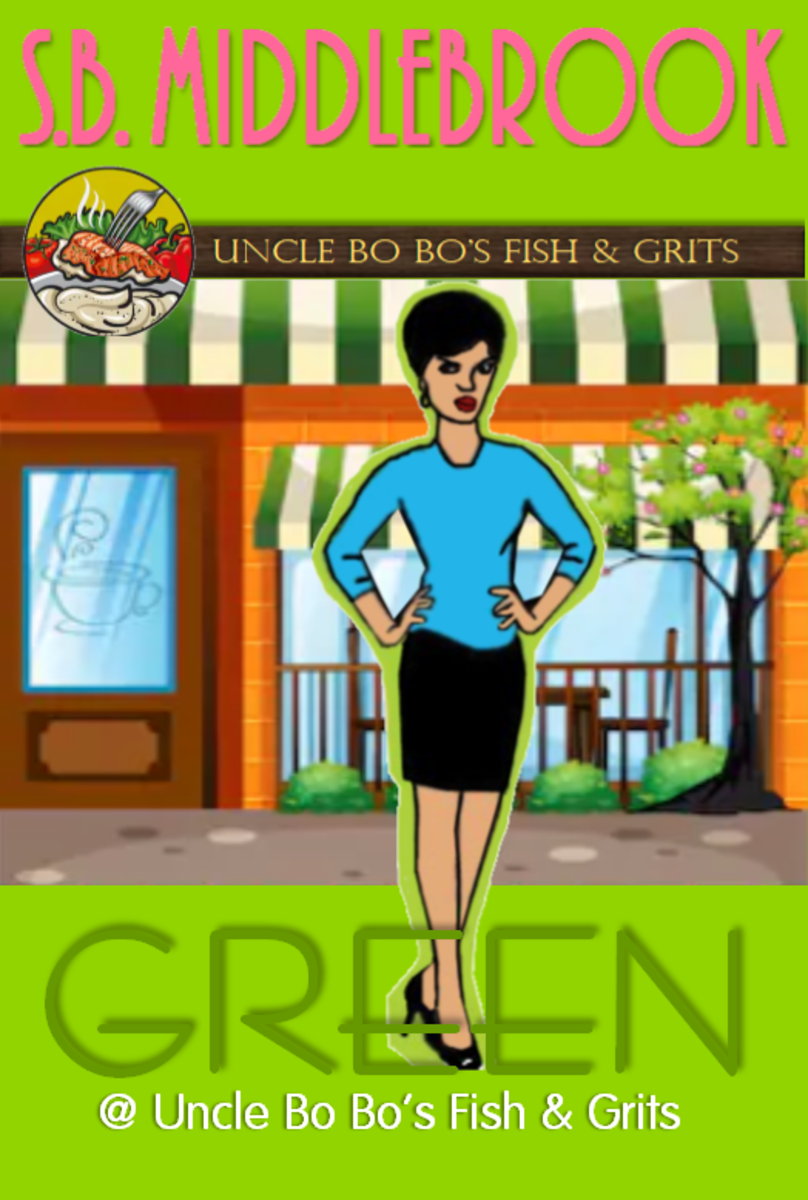- HubPages»
- Books, Literature, and Writing»
- Commercial & Creative Writing»
- Creative Writing
Secrets of Cape Cod - The Lake of Terror
by Bill Russo
(This article is based on the fiction books, Swamp Tales and Jimmy Catfish)
In a land noted mostly for its bays, sounds, and glittering saltwater beaches there exists a strange, almost unknown body of water. Hidden from roads and difficult to reach, Codfresh Lake is a refuge for the most extreme eccentrics of Cape Cod – an area renowned for being safe harbor to the idiosyncratic.
A list of the quirky famous people who live or vacation on Cape would fill a hundred volumes. Before the turn of the century, it was always fun to spot the original Norman ‘Psycho’ Bates (Tony Perkins) poking around dusty tables laden with pottery, paintings, old kitchen items and a thousand other sundries at the flea market held in the parking lot of the Wellfleet Drive-in movie theater.
All the presidents and their men, in their turn, flock to one of the 15 Cape Cod towns and the islands for the summer season. Painter Edward Hopper lived on cape. Playwright Eugene O’Neill had homes on the peninsula as did novelist Norman Mailer. John Belushi of “Saturday Night Live” hosted and visited incredibly wild parties on the cape.
Celebrities past and present have always been drawn to the 64 mile long sandbar. Today’s stars commonly seen around the villages include people like Taylor Swift, Matt Damon, Ben and Casey Affleck, Mark Wahlberg and many others.
Such luminaries hold no attraction for the people of Codfresh Lake. In point of fact, they probably don’t even know who Taylor Swift is. For Codfresh Lake is home, as I stated to the oddest of the odd and the oddest thing of all is the lake itself. It’s not really a lake and is only called so because there is no word in the English language for it.
The lake was formed, according to legend, during the great New England hurricane of 1938 – regarded by experts to be the worst tropical cyclone ever to hit the East Coast of the United States.
Cape Cod: 6 Miles Wide and 64 Miles Long
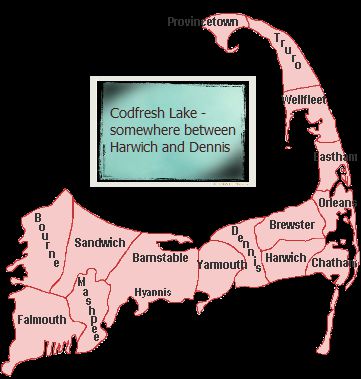
The Formation of the Twisted Lake
Torrential rains compounded a double barreled explosion of both the surf and the lakes. All the freshwater bodies of water on Cape Cod overflowed their banks, bursting dams and crushing bridges. Tides higher than the tallest buildings in the city of Hyannis gushed from the sea and washed away shacks and castles alike, leaving little more than toothpicks in their wake.
In the middle of Cape Cod, something eerie and impossible happened. The Swan River, a gentle saltwater stream that resides today near the Kreme n Kone seafood restaurant in South Dennis, became enraged and engorged. The tidal river expanded its footprint from between 30 and 45 feet wide to nearly a thousand, as it crumpled every building in its path. Once friendly, then satanic, the Swan rushed towards unpaved Bell’s Neck Road in Harwich.
Meanwhile in East Harwich and parts of Brewster; Long Lake, Pleasant Lake, Bell’s Lake and 14 minor ponds were swelling beyond belief. They burst their banks and took down all the trees and dwellings in their path. The assorted lake waters gathered into one massive river more than a quarter mile wide.
The two violent streams were like giant locomotives rushing at each other from opposite ends of the same track. The Swan River express began speeding directly towards the combined might of the torrent formed by the collaboration of the lakes Long, Pleasant, and Bell’s, along with the 14 minor ponds.
When the two behemoths met, the crash was loud enough to be heard as far away as Boston and Providence. The sound was at once the explosion of a bomb and the scream of a feral cat. A thick spout of water shot 4500 feet up into the sky before chuting back to the ground in the form of half frozen raindrops as big as baseballs.
The impact of the collision of the two disparate bodies of water instantly denuded the heavily forested area called Bell’s Neck Hollow. The trees were shredded. Boulders, stones, and pebbles were cast about like dice.
The strangeness of what happened next was not revealed until several hours after the rivers butted heads. The meeting of the waters had resulted in the formation of a lake six miles long and one mile wide. But the joining was not amicable.
The salt waters that had run up from South Dennis settled into a two mile section on the Dennis side of the newly formed lake, while the fresh waters that had come from Brewster and Harwich decided to reside in a two mile section on the Harwich side.
The two miles in the middle, which came to be known and feared as “The Brack”, was composed neither of salt nor fresh water, but some sort of a battleship gray brackish hybrid liquid.
The saltwater section came to be known as Sealake. Its bright blue waters bursting with cod, blues, and flounder encouraged a small settlement of about a hundred people to spring up within a few months.
The freshwater part was called Freshlake and a slightly larger village named Codtown soon came to life, drawn to the brown, muddy water by an abundance of trout, pickerel, and bass.
In the early years when the railroad still ran by, you didn’t hear of too many strange happenings at Codfresh Lake. After they tore up the tracks and the area became almost inaccessible things changed.
The Pilgrim Memorial in Provincetwon
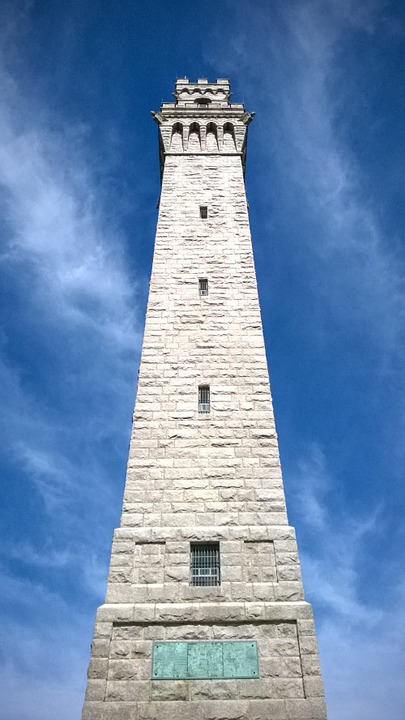
Of the Brack and Ships and Canvas Sails
Nobody knows for sure, but Anse Peckins, who ran the general store in Codtown said it was because of The Brack. Peckins closed his store and moved to Provincetown after the Jimmy Catfish situation. He used to entertain folks at the P-town Coffee House with tales of strange Codfresh Lake and its even stranger inhabitants.
Everybody loved his colorful stories but never took them seriously, especially the Jimmy Catfish story. Peckins sat onstage at a stool in the Provincetown C.H., as the locals call it, sipping a Simpson Springs birch beer seemingly unaware of the capacity crowd that always gathered to hear him weave his yarns.
Peckins surreptitiously assayed the crowd to make sure all the seats were full as he tipped his glass bottle of birch beer to lips hidden by mustache and whiskers. He took a long pull of the clear sparkly birch beer. It was made with water from a 6,000 year old spring in Easton, Massachusetts by the oldest bottling company in the U.S.
Short and spare with a long flowing white beard, Peckins looked like a skinny Santa Claus. After keeping his audience waiting for what seemed like ten minutes, Anse began speaking….
“I guess you’ve come for some stories about the lake,” he said through half closed eyes, his handlebar mustache jumping like twin frogs as he spoke. “There’s a lot to tell. There’s the story of Jimmy Catfish. Then of course there’s the giant killer catfish to talk about. Or I could tell you about how the engines tend to quit on airplanes when they try to fly over The Brack. It’s said that one time they found the wreckage of a twin engine Lockheed Electra 10E at the edge of The Brack. If I remember right, that plane was made famous by a lady flyer named Airhart.
“Or I could relate the story of the leader of the catfish school who was almost human, or the story of the human who was almost catfish. If you come around here often enough you’ll hear ‘em all.
“I believe that today I will tell you about a man who did not actually live by the lake, but was a friend of Jimmy Catfish’s father. Before coming to Cape Cod, Jimmy’s father, Francisco da Silva, was the captain of the last three-masted schooner still making Atlantic crossings in the 1950s.
“His friend, Josiah Spant was one of the most famous of all the New Beford and Cape Cod sea captains. One summer afternoon while we were sitting on the benches outside my store in Codtown, Cisco told me of the first meeting with Captain Spant….
“It was on the second voyage of the Lynette C that I met the old sailor,” said da Silva. “Spant had signed on as Quartermaster of the ship on her first voyage from New Bedford to the Islands of Cape Verde. The owner of the ship had just purchased her after she had been drydocked for years following retirement as the last ‘three master’ still plying the big water. John Manderer bought her and refit her but had trouble finding people skilled in the art of ‘sail’. He was convinced that sail would still be profitable but needed a veteran man to run the crew and the ship. Five or six men who had signed on for the trip were with the owner at the Gold Crown tavern on Acushnet Avenue in New Bedford drinking Dawson’s ale. One of the sailors pointed to a rail thin, weathered old man in a pea coat and sailor’s cap who was sitting by himself in a in a booth in the back of the dark room.
“That’s the very man you should get to run your ship, Mr. Manderer. It’s old Captain Josiah Spant from Cape Cod. That ancient salt ran packet ships all around the world for more than a half century.”
Taking a fresh pitcher of the locally brewed Dawson ale, Manderer walked toward the old captain’s booth. Wispy white hair fringed the aged man’s mostly bald head and a hard pinched look was drawn across his face, but he flashed a broad grin and accepted the offer of the Dawson’s ale in exchange for a seat.
Manderer introduced himself and offered his hand.
"Don't think me rude, Captain," said the aged seaman, "but I have no hand to shake with. At least not a right hand."
Without being requested to do so, Spant began recounting the tale of his life in a firm voice that seemed to resonate from a much larger and more youthful individual.
"It was in nineteen and twenty-nine, when I was first mate on the Johnny B out of Fall River, that my troubles began.
The Captain was an idiot. He had plenty of money but no sailing experience when he bought the ship. The Quartermaster was a drunkard who was pukin' in the scuppers when we encountered the worst storm I had ever seen.
Naturally with the Quartermaster out of commission and the Captain an ass, I ordered the sails down. But the Captain came on deck and started screaming that we needed to keep the sails up to complete the trip on time so he could make his money. He overruled me and forced the men to reset the sails. In less than five minutes they were in shreds and it took us over a week to repair them.
Well, we finally got to Cape Verde and were going to island hop for a while, dropping off and picking up goods, before heading back to the States. We were late in casting off from Brava Island for Fogo.
Because we had a fool for a Captain and a rum soaked sot for the second in command, the crew was always careless and somebody failed to release the shore line in time. When it snapped, it took my right hand with it.
I was in bloody agony for more than 24 hours until we finally reached Fogo, where they had to amputate my arm. The Johnny B sailed three days later, without me. I was in no shape for the sea, but even if I was able, I wouldn't have gone on that cursed ship again for any amount of money."
Spant paused and pulled off his captain's hat, placing it on the table next to the frosty pitcher of Dawson's Ale. He drained his glass and then leaned as far forward as he could to get closer to Manderer and whispered as if telling high secrets:
"The boat sank two weeks later in a minor storm. Twenty-eight passengers and 22 crew went to the bottom - including the rotten Captain and his addled Quartermaster."
“That’s the story that Jimmy Catfish’s father told me of how Josiah Spant was signed up to come out of retirement and get back under sail,” said Anse Peckins.
“Over the years, Spant rose to the rank of Captain and he made more than three dozen crossings in Three-masted and even Four and Five masted ships,” Peckins continued.
“Impressed with the ancient sailor's knowledge and experience, the owner of the Lynette C hired him on the spot, sealing the bargain with a final glass of Dawson's Ale. Manderer told Spant that he would be his Quartermaster and would have complete and unquestioned command of the day to day operation of the vessel.
“Blessed with excellent weather and luck that made for smooth sailing, they left New Bedford and landed at Fogo in time to complete that first crossing in just over a month.”
Anse Peckins paused in his storytelling to drain the last of his birch beer. He raked his fingers through his lengthy beard and called for a new bottle. An apple cheeked young waitress rushed to the stage with a small table in one hand and a fresh Simpson Springs Birch Beer in the other. She set the table down on the stage and then opened the soda. Anse thanked her and began working on the new drink before resuming.
“That first voyage of the ship went like clockwork but trouble cropped up as soon as the boat landed in Cape Verde on Sao Nicolau, (Christmas Island). Many of the crew members were men from Cape Verde and they decided to remain on the islands and not work the return voyage. The ship was shorthanded and could not set sail. Jimmy Catfish’s dad and his pal Carlos Pires had been searching for a way to emigrate to America and when they heard about the ship they quickly volunteered and were signed on.
“They also helped to recruit other crewmembers. They were able to induce their friend Johnny Gomes to sign on as “Striker”. Now a striker on a sailing ship has no job – until food runs short. Then it is up to him to find food somewhere, somehow. He may have to set off in a dory in search of land. He may have to snare sea birds or scoop fish from the sea – but from whatever source he is expected to find food.
“The return trip to the United States with Carlos and Cisco as mates had started well, but began to take an ominous turn on the tenth day. A pounding gale roared in from the North and smashed the rudder, causing the mizzenmast to crash down on the deck. Last in line and at about 100 feet, it is the shortest of the three masts.
“Mr. Spant came to the rescue. With nimble movements that belied his age and infirmity, the Quartermaster rigged an improvised series of wires that allowed the damaged rudder to operate as good as new. Carlos and Cisco were constantly at the old man's side, helping him in any way they could, and helping themselves by absorbing his encyclopedic sailing knowledge.
“As October became November in the 22nd day of the voyage, hurricane season began and the ship was blasted by a second storm that drove them back some 300 miles.
“When the torment subsided they were becalmed. The ocean was as flat as an immense pane of glass. There was no wind, no waves, and no current. For five long days and nights The Lynette C made no forward progress. Foodstocks began to dwindle dangerously, but once again the ship was rescued by a veteran crew member.
“Johnny Gomes, the Striker, fetched a coil of rope and lowered a dory to the water. Spreading buckets of chum on the surface, he stood up in the little boat as it bobbed alongside the ship, and built a noose on the end of the rope. To the amazement of his 67 shipmates, he began twirling the rope in long circles above his head and lassoed sharks as they broke the surface while churning through the bait. His long, crimson beard danced like a raging fire when he pulled on the straining line and dragged the beasts into the dory.
"It tastes just like chicken boys," he shouted as he hauled in ten of the beasts in a single afternoon. Setting out bits of the sharks in traps that he put in empty lifeboats, he caught dozens of sea birds. He even snared large, meaty sea turtles. He thus provided thousands of pounds of meat, fish and fowl for the passengers and crew at a time when it was most needed.
“Johnny taught the Coelho brothers (the cooks) how to prepare the sharks and how to conserve fresh water by steam cooking food with sea water.
“Working with the carpenters and using pots and pans and such from the Coelhos, Gomes even rigged up a still - not to make grogo or whiskey, but to distill the ocean water to augment the stock of fresh water. As a by-product, he had several pounds of pure sea salt.
"You never have to bring salt aboard," he told them, "because you get almost a half cup from every gallon that you boil away."
“Everyone agreed that the Striker, Johnny Gomes, earned his entire pay and more during those five wind-less days.
“Once the breezes came back, the remainder of the trip went smoothly and the ship docked at the State Pier in New Bedford in a respectable 35 days.
“So that’s the story of Josiah Spant and part of the story of Francisco da Silva, the father of the catfish boy. Most of you know that tale. For those that don’t I will repeat it some other time - so come on back to the coffee house soon for more stories,” said old Anse Peckins as he took a final draft of Simpson Springs Birch beer before walking off stage to the enthusiastic applause of the packed house.
(Author’s note: This story is adapted from the world of Codfresh Lake as told in my books Jimmy Catfish, and Swamp Tales-Horrors from the Hockomock Swamp and the Marshes of Cape Cod.)
Jimmy Catfish's Backyard
